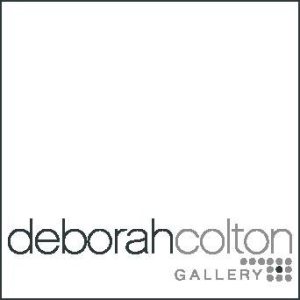Patrick Renner is a native Houstonian, search and received his BFA from the Kansas City Art Institute and his MFA from the New York State College of Ceramics at Alfred University. Renner teaches art part-time at the Sharpstown International School and maintains a rigorous studio practice. His artwork has been exhibited in many venues locally and in various venues in the United States. In 2015 his sculpture Funnel Tunnel garnered critical acclaim and a national award for public sculpture. It moved to New Orleans for display earlier this summer. His presented works, tailored to this exhibition, make use of his familiar cloud motif and his signature wood-worked sculptural methodology but also incorporate kinetic and electronic applications.
“Billboard” by Patrick Renner
1. What do you do to bring art to the surrounding community?
When possible, especially with my larger public installation pieces, I hope to bring something to the surrounding community that not only is a point of interest, but also gives all people an opportunity to contribute their creative energy to the end product.
2. How did you first get into art?
I would attribute my inclination toward art making to my parents: my dad is an excellent illustrator and my mom got her terminal degree in a painting and printmaking. As a kid they took me to the museums often, and we frequented galleries and even some artists’ studios, so that it became familiar while still being exciting to see the process and the outcome.
3. How has your talent evolved since you began?
The woodworking skills I learned from my grandfather evolved in complexity with practice, aka trial and error. Other techniques learned from various mentors along the way cycled into my practice and have given me the ability to make many of the things I see in my head…although some still allude me on how to bring them to fruition.
4. What type of art/artist do you most identify with?
Although I tend to identify myself as a sculptor, I get a lot in the way of influence from other art genres—especially painting—as well as many things not even directly in the conversation of art. Architecture, film, culinary, quilting, music, car culture, folk art, and an equally random assortment of other things filter into my work.
5. What is you biggest dream as an artist?
That my work could open doors for me to travel other places is something I would never tire of. The opportunity to see new places and meet new people as a result of my creative endeavors has been my goal from early on in my art career.
6. What is your favorite thing to do besides creating art?
Watching movies, reading, social discourse (preferably over beers).
7. What was your inspiration for your part of the Collective Solid?
All the works I made for this show used the stylized cloud icon. It has persisted as an interesting image to me because it can encompass a variety of ideas. Cloud gazing is an activity that may be as old as history, something people did well before the invention of any of the devices that tend to occupy so much of people’s time nowadays as a diversion. When cloud gazing, people are free to let their minds wander and the associative exercise of identifying pictures in the clouds can be quite fun and amusing. In general, my interest in presenting an artwork is that it become a container/a place for people to map their own ideas onto; for me there’s no such thing as right or wrong associations, just like with cloud gazing.\n\nConversely, since clouds are tied to weather and storms, there can also be a melancholy or tumultuous quality to the image. The ‘silver lining’ notion is one that’s been personally poignant for a period of time in my life, so it’s a useful symbolic device. And in regards to the show title Collective Solid, I love that clouds are just that…something that takes form out of a nebulous conglomeration of water vapor; the mutable nature of our ideas and working methods as artists in the show is akin to a shape-shifting cloud moving across the sky.
8. What is the most memorable thing someone has said to you about your work?
I don’t remember.
Maybe when a guy in a car yelled at me while I was working on an outdoor piece: “I know what it is, but what’s it gonna BE?!”
9. How do you think people should try to find art in their daily lives?
To me it’s not a requirement, like something people should do, and it definitely shouldn’t be forced. Having said that, I think everyone oughta enjoy whatever it is they feel excited by in the aesthetic realm.\n\nWhen you see a beautiful thing enjoy the beautiful thing. Maybe that’s a sunset, or an attractive person, or a beautifully decayed building that has weathered into a divine wreck. Eat delicious food, drink good drinks. Listen to music that transports you to a higher plane emotionally (happy, sad, etc.). Wear the clothes that feel comfortable and that express your self-expression.\n\nAnd if you’re so-inclined, go look at some capital A-R-T. If not, maybe get some ice cream or something.
10. Do you have any advice for aspiring artists?
Aspire. It’s your most powerful tool to get where you want to go.
Remember, you are the only one who knows the nuanced beauty of what that picture of your success looks like, the one in which your dreams are coming true for your future self.
